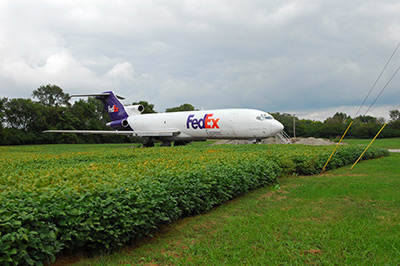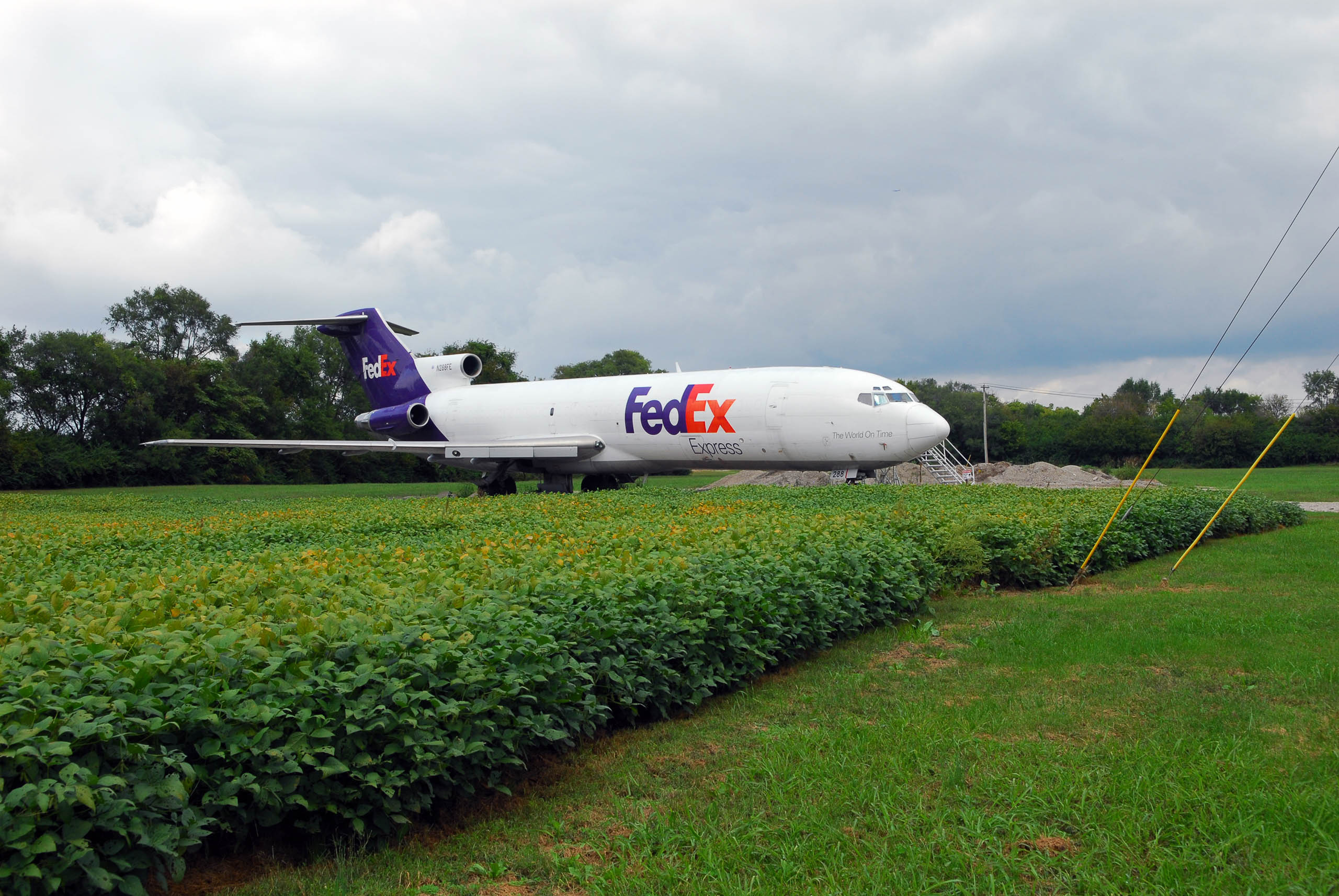



On the site now occupied by the runways and hangars of the Downtown St. Louis Airport once spread the wide bowl of Goose Lake. Part of a former Mississippi River meander that was cut off from the main channel over a millennium ago, this former lake formed part of what geographers called the “lake region” of the southern American Bottom. Goose Lake, like the larger Pittsburg Lake (née Grand Marais) to its east, were arcing lowland sloughs whose water level raised and lowered with local precipitation and the water level of the river adjacent. These lakes, in conjunction with Prairie du Pont creek, formed a slow, slight watershed channeling upland flow from the bluffs to the river.
The airport proper opened as the Curtiss-Steinberg Airport in 1929—two decades after the ditches, canals, and levees of the East Side Sanitary District had drained Goose Lake—occupying a large tract of uninhabited land in close proximity to downtown St. Louis. The airport was initiated by a consortium of business leaders that included Mark Steinberg (a St. Louis financier), Curtiss-Wright (an aircraft and engine manufacturing firm), Transcontinental Air Transport Service (later to become TWA), and the Pennsylvania Railroad Company. A few years earlier, Oliver Parks had founded an aeronautical school, Parks College, in fields less than a mile away. At the onset of World War II, with a noted lack of skilled airmen, Parks leased and later bought out the Curtiss-Steinberg interests to train cadets. Renaming the airfield Parks Metropolitan Airport after the war, by 1959 Parks nevertheless saw more potential in the airport land as a real-estate venture than as an airfield, and began to plat a subdivision on its southern edge. With the airport closed, and the “St. Louis Gardens” subdivision 200 homes into its 2,500-unit master plan, the airport was bought by the Bi-State Development Agency and re-opened with Parks as manager.
The airport remains home to two of the few remaining Curtiss-Wright hangars in the country, and both were placed on the National Historic Registry in 2007. These hangars were located at all major airports in the country at the time and carried the name of the better-known aeronautical pioneers with whom the Curtiss Aeroplane and Motor Company merged in a 1929 business venture. The Greater St. Louis Air and Space Museum is housed in Hangar 2, with a range of displays about the region’s aeronautical history.